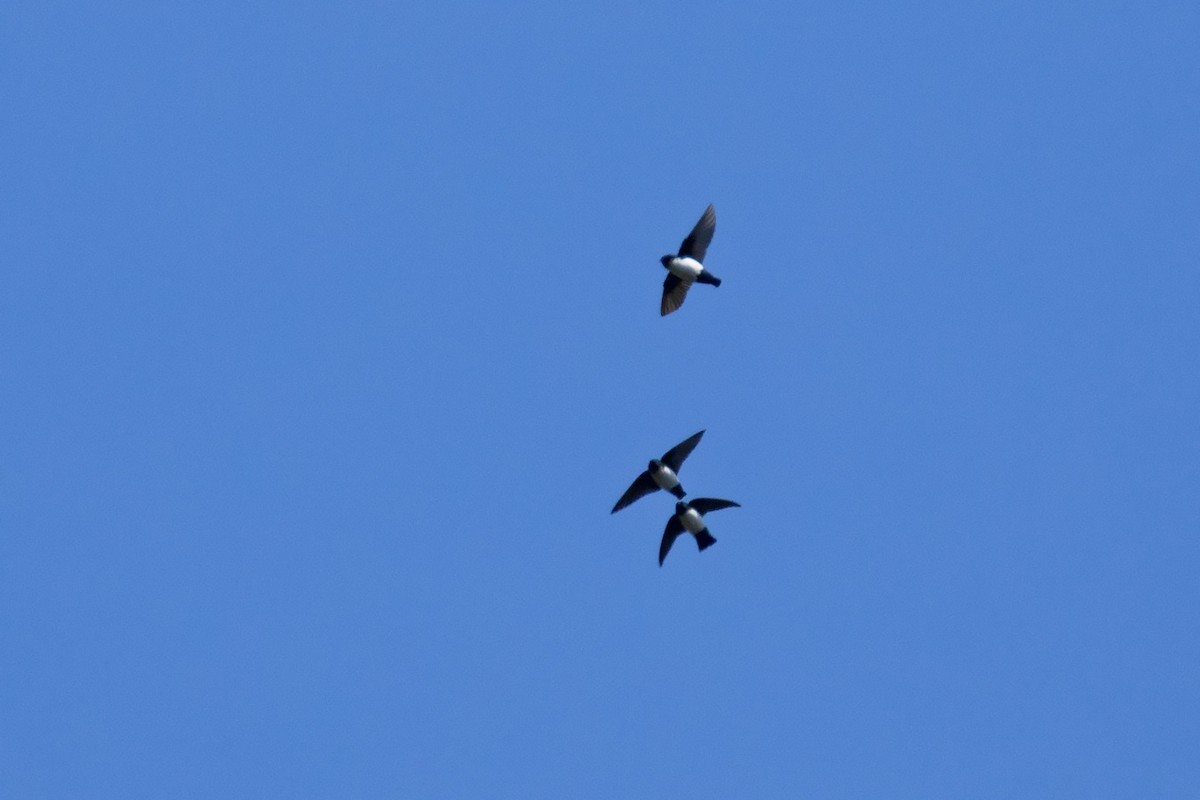Nepal House Martin
A species of House-martins Scientific name : Delichon nipalense Genus : House-martins
Nepal House Martin, A species of House-martins
Botanical name: Delichon nipalense
Genus: House-martins
Content
Description General Info
 Photo By Ayuwat Jearwattanakanok
Photo By Ayuwat Jearwattanakanok Description
The adult Nepal house martin is 13 cm (5.1 in) long, mainly blue-black above and white below. It has a contrasting pure white rump, the tail and upperwings are brownish-black, and the underwings are grey-brown. The legs and feet are brownish-pink and covered with white feathers, the eyes are brown, and the bill is black. The chin is black but the extent varies clinally. In the northeast of the range, birds of the race D. n. cuttingi have black on the whole of the throat and the uppermost breast, but further west or south the black increasingly becomes restricted to the chin. There are no differences in appearance between the sexes, but the juvenile bird is less glossy and has a duskier throat and buff-washed underparts. The eastern form D. n. cuttingi has a wing length of 99–106 mm (3.9–4.2 in), slightly larger than the nominate subspecies at 90–98 mm (3.5–3.9 in). Both subspecies can be distinguished from the similar Asian and common house martins by their black chin, black undertail coverts and much squarer tail. This is an exceptionally fast-flying martin which gives an occasional short chi-i call in flight. It is otherwise is a rather quiet bird, but it has a brief three-note breeding song. 
Size
12 cm
Nest Placement
Building
Feeding Habits
Nepal House Martin primarily consumes insects caught mid-flight, often foraging in groups along ridges or over forests. It has a gregarious nature, feeding alongside other aerial insectivores.
Habitat
The nepal House Martin typically inhabits open areas with accessible cliffs, often found in valleys and mountainous regions. These birds are also known to reside near human settlements, particularly around villages. During the non-breeding season, they tend to occupy lower altitudes, generally favoring places with more open space and less dense vegetation.
Dite type
Insectivorous
General Info
Feeding Habits
Bird food type
Distribution Area
The nominate subspecies D. n. nipalense breeds in the Himalayas from Garhwal east through Nepal, north-eastern India and Bangladesh as far as western Myanmar. The race D. n. cuttingi is found in northern Myanmar, along Myanmar's border with Chinese Yunnan and in northern Tonkin, Vietnam. The Nepal house martin is largely resident, but may move to lower altitudes when not breeding, and has been occasionally recorded in northern Thailand in winter. The range in Thailand is poorly known. The habitat is river valleys and wooded ridges at 1,000–4,000 m (3,300–13,100 ft) altitude, although mainly below 3,000 m (9,800 ft). When not breeding, birds typically descend to 300 m (980 ft), occasionally to 150 m (490 ft). The range of this species overlaps with that of the nominate subspecies of Asian house martin, although they breed at different altitudes. The height separation and the small differences in appearance seem sufficient to prevent interbreeding. 
Species Status
The Nepal house martin has a large range that does not appear to be contracting, and its numbers appear to be stable, although the population is unknown. Since the range is more than 20,000 square kilometres (7,700 sq mi), and there are more 10,000 mature individuals, in the absence of any large decline in distribution or numbers the species does not appear to meet the criteria to be considered vulnerable, and is currently evaluated as Least Concern. Although often localised due to the requirement for suitable cliff nesting sites, this species is fairly common in Nepal as a whole, and very common in some regions. Some earlier authors have noted this species as uncommon in Nepal. 

 Photo By Ayuwat Jearwattanakanok
Photo By Ayuwat Jearwattanakanok Scientific Classification
Phylum
Chordates Class
Birds Order
Perching birds Family
Swallows Genus
House-martins Species
Nepal House Martin